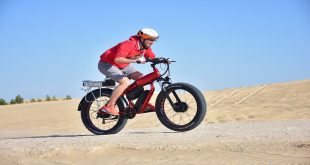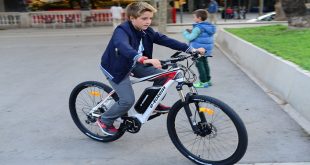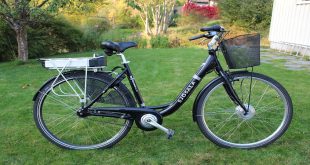Electric bikes typically use a brushless DC (BLDC) motor which provides efficient, reliable and silent power assistance to the rider. These motors are compact, lightweight, and require minimal maintenance.
What Are The Key Components Of Electric Bikes?
Electric bikes are revolutionizing transportation, offering a sustainable and efficient alternative to traditional bicycles. These cutting-edge machines are powered by a range of sophisticated components that work together seamlessly to provide a smooth and enjoyable riding experience. Understanding the key components of electric bikes is essential for anyone looking to explore this eco-friendly mode of transportation.
Battery
The battery is the heart of an electric bike, providing the necessary power to the motor. Typically, electric bikes are equipped with lithium-ion batteries, known for their high energy density and long-lasting performance. These batteries can be easily recharged using a standard electrical outlet, making them convenient for daily use. The battery capacity dictates the range of an electric bike, with higher capacity batteries allowing for longer rides on a single charge.
Motor
The motor is what sets electric bikes apart from their traditional counterparts. Electric bikes feature powerful electric motors that assist the rider while pedaling, making uphill climbs and long distances more manageable. There are various types of motors used in electric bikes, including:
- Hub motors: These motors are integrated into the front or rear wheel hub and provide direct power transfer. They are known for their simplicity and reliability.
- Mid-drive motors: Positioned near the bike’s cranks, mid-drive motors provide more balanced weight distribution and better handling. They are capable of utilizing the bike’s gears, resulting in improved efficiency and performance.
Controller
The controller serves as the brain of an electric bike, regulating the flow of electricity from the battery to the motor. It acts as the intermediary between the rider’s input and the motor’s output, ensuring a smooth and responsive ride. The controller allows riders to adjust power settings and can even provide helpful features like regenerative braking, which recharges the battery when the brakes are applied.
Sensors
Electric bikes are equipped with sensors that detect the rider’s pedaling force, speed, and cadence. These sensors provide valuable feedback to the controller, allowing it to adjust the motor assistance accordingly. Pedal sensors detect the rider’s pedal movement and determine when to engage the motor. Speed sensors measure the bike’s velocity, activating the motor based on predetermined thresholds. These sensors work together seamlessly, providing a natural and intuitive riding experience.
Understanding Electric Bike Motors
When it comes to electric bikes, the type of motor used is a crucial factor that greatly influences the performance and functionality of the bike. Understanding different types of electric bike motors is essential for making an informed decision when purchasing an electric bike. In this article, we will delve into two popular types of electric bike motors: hub motors and mid-drive motors. We will also discuss important factors to consider when choosing a motor for your electric bike.
Different Types Of Electric Bike Motors
There are primarily two types of electric bike motors: hub motors and mid-drive motors. Each type has its own advantages and considerations to keep in mind.
Hub Motors
Hub motors, as the name suggests, are integrated within the hub of the bike’s wheel. There are two variations of hub motors – front hub motors and rear hub motors. Front hub motors are located in the front wheel, while rear hub motors are found in the rear wheel.
Hub motors offer a number of benefits. They are generally easier to install and require less maintenance compared to mid-drive motors. Due to their centralized position, hub motors provide a balanced weight distribution, resulting in improved stability and handling of the bike. Additionally, hub motors are known for their smooth and silent operation, enhancing the overall riding experience.
However, hub motors have some limitations to consider. They tend to add weight to the wheel, which may negatively affect the bike’s maneuverability. Furthermore, hub motors may not perform as efficiently when climbing steep hills or tackling challenging terrains.
Mid-drive Motors
Mid-drive motors are positioned at the bike’s bottom bracket, directly connected to the crankshaft. This design allows the motor to leverage the bike’s existing gears, resulting in more efficient power distribution and improved torque.
One of the major advantages of mid-drive motors is their ability to provide a more natural riding experience. By utilizing the bike’s gears, mid-drive motors offer better control and responsiveness, especially when climbing steep hills or navigating varied terrains. Additionally, the centralized position of the motor contributes to a well-balanced weight distribution.
However, mid-drive motors require more maintenance compared to hub motors. They are also relatively more complex to install, which may increase the initial cost of the bike. Furthermore, mid-drive motors tend to produce more noise during operation.
Factors To Consider When Choosing A Motor
When selecting a motor for your electric bike, it is important to consider a few factors:
- Bike usage: Determine the primary purpose of your electric bike. Are you planning to use it for commuting, off-roading, or leisurely rides? Consider the terrain you will encounter and the level of assistance required.
- Power and torque: Evaluate the power and torque capabilities of the motor. Higher wattage and torque ratings can provide better acceleration and performance, particularly for challenging terrains.
- Battery capacity: Ensure that the motor is compatible with a battery with sufficient capacity to support your intended mileage and riding style.
- Cost: Budget considerations play a significant role. While mid-drive motors can be more expensive, they offer advantages that may justify the additional cost.
- Personal preference: Ultimately, choose a motor that aligns with your personal preferences, riding style, and specific requirements.
By considering these factors and understanding the differences between hub motors and mid-drive motors, you can make an informed decision and select the most suitable motor for your electric bike.
Exploring Hub Motors
When it comes to electric bikes, one of the key components that determine their performance and efficiency is the type of motor used. Among the various options available, hub motors have gained significant popularity. In this section, we will delve into hub motors, their advantages and disadvantages, as well as the different variations you may come across.
Overview Of Hub Motors
Hub motors, as the name suggests, are motors that are integrated into the hubs of the bike’s wheels. Unlike other types of electric bike motors, hub motors are placed directly in the wheel, either in the front or back. This positioning makes them inconspicuous and allows for a seamless integration into the overall design of the electric bike.
Advantages And Disadvantages Of Hub Motors
Hub motors offer several advantages that contribute to their popularity. One major advantage is their simplicity. Since hub motors are self-contained units, they require minimal maintenance and are less susceptible to wear and tear. Additionally, the overall power output is evenly distributed, providing a smooth and efficient riding experience.
However, hub motors also have a few disadvantages to consider. Firstly, their positioning in the wheel hub can potentially increase the overall weight of the electric bike, affecting maneuverability. Secondly, hub motors may not offer as much torque as other motor types, which can impact performance, especially when climbing steep slopes. Lastly, repairing or replacing a hub motor can be more challenging and costly compared to other motor types.
Variations Of Hub Motors
Hub motors come in different variations, each with its own set of features and advantages. The two main variations are:
- Front Hub Motors: These motors are located in the front wheel hub. They offer better balance and weight distribution, making them suitable for urban commuting and leisurely rides. Front hub motors are generally known for their ease of installation, compatibility with most bike frames, and cost-effectiveness.
- Rear Hub Motors: As the name implies, rear hub motors are integrated into the rear wheel hub. They offer more power and torque, making them ideal for off-road adventures and uphill cycling. Rear hub motors provide better traction, especially in wet or slippery conditions, and are generally preferred by experienced riders looking for enhanced performance.
In conclusion, hub motors are a commonly used motor type in electric bikes. They offer simplicity, smooth riding experience, and options for both front and rear integration. However, it is important to weigh the advantages and disadvantages when considering the motor type for your specific electric bike needs.
Analyzing Mid-drive Motors
Overview Of Mid-drive Motors
Mid-drive motors, as the name suggests, are electric bicycle motors that are centrally located in the middle of the bike frame. Unlike hub motors, which are situated in either the front or rear wheel, mid-drive motors directly power the crankshaft of the bike.
This positioning offers several advantages over other types of electric bike motors. Firstly, mid-drive motors provide a balanced weight distribution, as they are positioned low and central on the frame. This enhances the overall stability and handling of the electric bike, ensuring a more comfortable and enjoyable riding experience. Furthermore, the central placement of mid-drive motors allows for efficient power transfer and maximum traction, particularly when tackling steep hills or challenging terrains. The ability to leverage the bike’s existing gears also contributes to better climbing performance and increased range.
Advantages And Disadvantages Of Mid-drive Motors
Like any other technology, mid-drive motors have their fair share of advantages and disadvantages:
- Advantages:
- Increased efficiency: By harnessing the bike’s gears, mid-drive motors can operate in their optimal RPM range, resulting in higher efficiency and reduced energy consumption.
- Better climbing performance: The added torque generated by mid-drive motors makes tackling hills and steep inclines easier, outperforming hub motors in such situations.
- Superior handling and balance: The central placement of mid-drive motors helps maintain a low center of gravity, resulting in enhanced stability and control.
- Extended range: The efficient power transfer and ability to tap into the bike’s gears contribute to increased range, allowing riders to enjoy longer trips without worrying about battery life.
- Disadvantages:
- Higher cost: Mid-drive motors tend to be more expensive than hub motors due to their complex design and integration.
- Mechanical complexity: The intricate mechanisms of mid-drive motors require regular maintenance and, in some cases, can be more prone to wear and tear.
- Increased noise and vibration: Compared to hub motors, mid-drive motors may produce more noise and vibration as they directly engage with the bike’s drivetrain.
Variations Of Mid-drive Motors
Mid-drive motors come in various forms, each offering unique features and characteristics:
| Motor Variation | Features |
|---|---|
| Geared Mid-Drive Motors | These motors utilize a reduction gear system, which allows for higher torque output and improved climbing abilities. |
| Direct Drive Mid-Drive Motors | Direct drive mid-drive motors eliminate the need for gears, providing a smoother and quieter ride experience. |
| Speed Mid-Drive Motors | Designed for higher speeds, these motors offer increased power and performance, ideal for riders who prioritize speed. |
| Reliable Mid-Drive Motors | These motors prioritize reliability and durability, ensuring consistent performance over long periods of use. |
By analyzing the various types of mid-drive motors, riders can select the one that aligns best with their specific needs and preferences. Whether it’s prioritizing torque, speed, or reliability, mid-drive motors offer versatility and performance for electric bike enthusiasts.
Comparing Hub Motors Vs. Mid-drive Motors
When it comes to electric bikes, the type of motor used plays a crucial role in determining its performance, efficiency, and overall ride feel. Two commonly used motor types are hub motors and mid-drive motors. Let’s compare these two types and take a deeper look at their performance differences, efficiency, power delivery, and impact on bike handling and ride feel.
Performance Differences
The performance of an electric bike heavily depends on the type of motor used. Hub motors are integrated into the wheel hub, either in the front or rear, providing direct assistance to the wheel. This design offers a simple and straightforward mechanism that delivers consistent power and torque. On the other hand, mid-drive motors are positioned near the pedals, engaging the drivetrain directly. This setup allows for better weight distribution and higher torque transmission, resulting in improved climbing capability and overall performance.
Efficiency And Power Delivery
Efficiency and power delivery are important factors to consider when comparing hub motors and mid-drive motors. Hub motors typically provide power to a single wheel, which can lead to uneven weight distribution and impact the bike’s efficiency. In contrast, mid-drive motors work in conjunction with the bike’s gears, allowing for better power allocation and a more efficient use of energy. This makes mid-drive motors ideal for hilly terrains or situations where maximum power and efficiency are required.
Impact On Bike Handling And Ride Feel
The choice between hub motors and mid-drive motors also has a noticeable impact on bike handling and ride feel. Hub motors tend to be heavier and can alter the center of gravity, potentially affecting maneuverability and stability. However, their direct power delivery can provide a more consistent and predictable riding experience. On the other hand, mid-drive motors are generally lighter and positioned centrally, resulting in a more balanced weight distribution and enhanced bike handling. Additionally, the use of the bike’s gears with a mid-drive motor can make the ride feel more natural and responsive.
Choosing The Right Motor For Your Electric Bike
Considerations Based On Riding Style And Terrain
When it comes to choosing the right motor for your electric bike, one of the first considerations you should take into account is your riding style and the terrain you’ll be riding on. Different motors are designed with specific riding styles and terrains in mind, so it’s important to choose one that matches your needs.
- For those who enjoy a leisurely ride on flat city streets or bike paths, a motor with lower power and torque may be suitable. These motors are optimized for providing a smooth and comfortable ride, perfect for casual riders.
- If you’re an adventurous soul who loves tackling challenging terrains, such as steep hills or rough trails, you’ll need a motor with higher power and torque. These motors can provide the necessary assistance to conquer demanding rides with ease.
Ranges Of Motor Power And Torque
The power and torque of an electric bike motor are key indicators of its performance. Power refers to the motor’s ability to generate energy, while torque determines the force that drives the bike forward. It’s important to consider the range of power and torque options available when choosing a motor for your electric bike.
| Motor Power | Torque |
|---|---|
| 250W | Up to 50 Nm |
| 500W | Up to 75 Nm |
| 750W | Up to 100 Nm |
Keep in mind that the power and torque you need depend on your riding style and the terrain you’ll be riding on. If you stick to mostly flat surfaces, a motor with lower power and torque may be sufficient. However, if you frequently encounter challenging terrains, you may want to opt for a motor with higher power and torque to ensure a smooth and effortless ride.
Compatibility With Bike Frames And Drivetrain Systems
Another crucial factor to consider when choosing an electric bike motor is its compatibility with your bike’s frame and drivetrain system. Not all motors are designed to fit every bike, so it’s important to ensure that the motor you choose is compatible with your specific bike model.
- Check the specifications of the motor to ensure that it can be mounted on your bike’s frame without any modifications or compatibility issues.
- Consider the type of drivetrain system your bike has. Some motors are designed to work seamlessly with certain drivetrain setups, so it’s important to choose one that matches your bike’s drivetrain system to ensure optimal performance.
If you’re unsure about the compatibility of a motor with your bike, it’s always best to consult with a knowledgeable electric bike specialist or the manufacturer to ensure a perfect fit.
Frequently Asked Questions On What Type Of Motor Is Used In Electric Bikes?
What Type Of Motor Is Used In Electric Bikes?
Electric bikes typically use brushless DC (BLDC) motors. These motors provide efficient and reliable power delivery, making them ideal for electric bikes. BLDC motors have a longer lifespan, are quieter, and require less maintenance compared to other types of motors.
How Does A Brushless Dc Motor Work In Electric Bikes?
A brushless DC motor works by using a combination of magnets and electronic controls. The magnets create a rotating magnetic field, which interacts with the stator’s coils to generate torque and power the bike. These motors are designed to optimize energy efficiency and offer a smooth riding experience.
Are Electric Bike Motors Waterproof?
Many electric bike motors are designed to be water-resistant. They are typically sealed to prevent water from entering and damaging the internal components. However, it’s important to check the specific IP (Ingress Protection) rating of the motor to ensure it can withstand various weather conditions and prevent water damage.
Conclusion
To summarize, electric bikes are equipped with various types of motors to cater to different needs and preferences. From hub motors to mid-drive motors, each option has its own advantages and considerations. By understanding the differences, you can make an informed choice when purchasing an electric bike.
Whether you prioritize power, efficiency, or versatility, there is a motor type that suits your requirements. So, go ahead and embrace the world of electric bikes, enjoying an eco-friendly and convenient mode of transportation.
[su_button id=”download” url=”https://amfana.com/take-my-folding-electric-bike-on-a-plane/” target=”blank” style=”flat” background=”#10B98e” size=”20″ wide=”yes” center=”yes” radius=”round”]Next Article[/su_button] AmFana Pedal through life's journey: Unchain the Adventure!
AmFana Pedal through life's journey: Unchain the Adventure!





